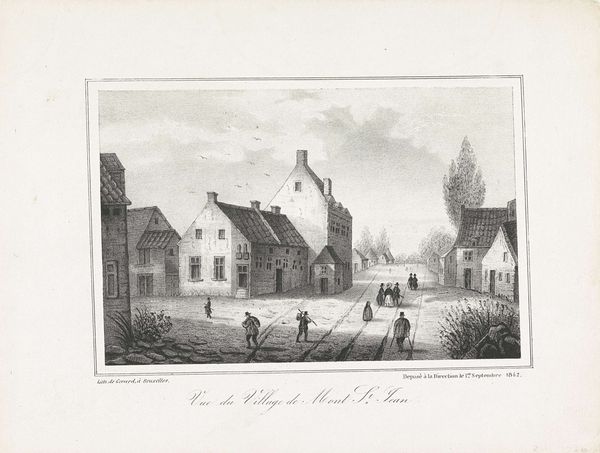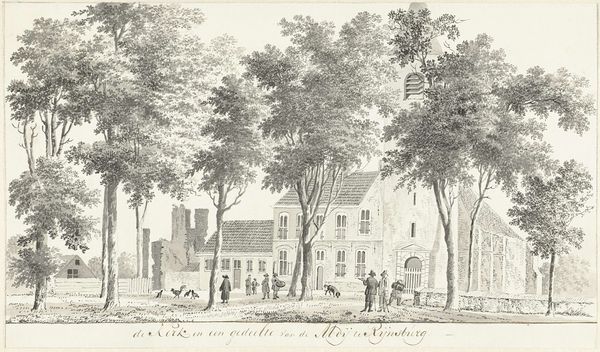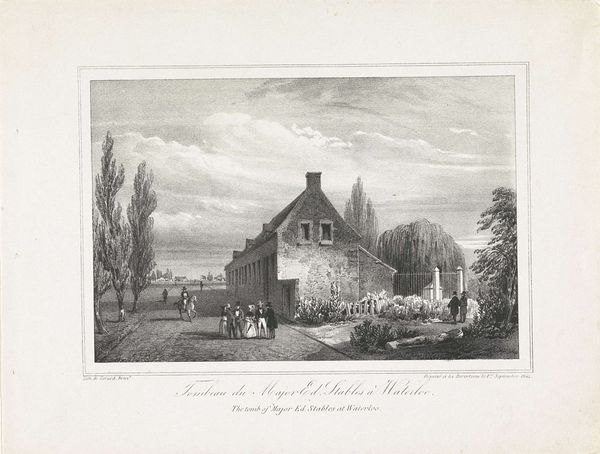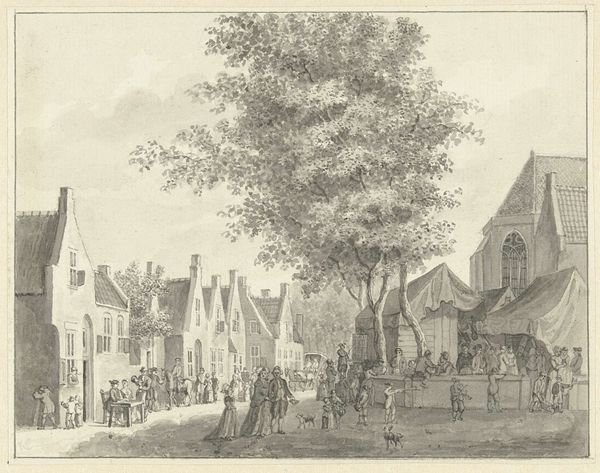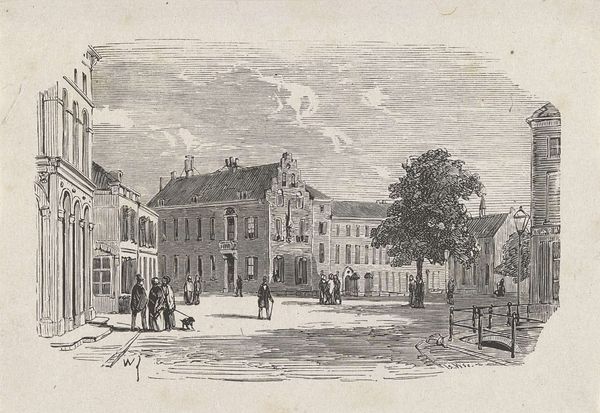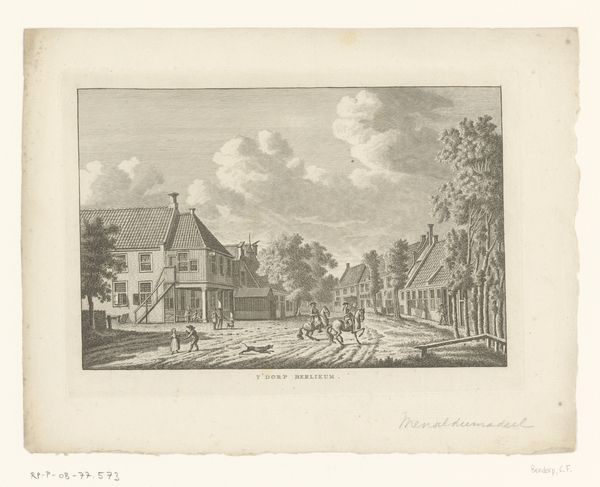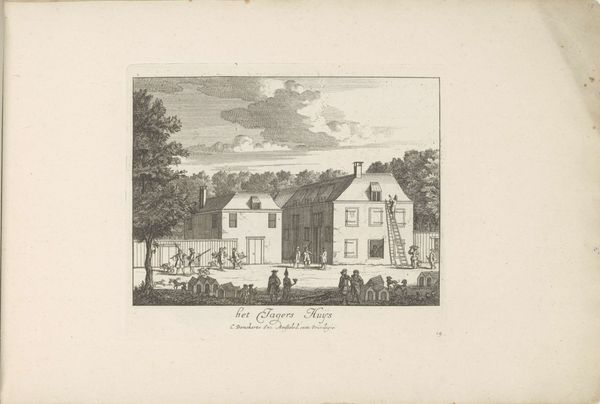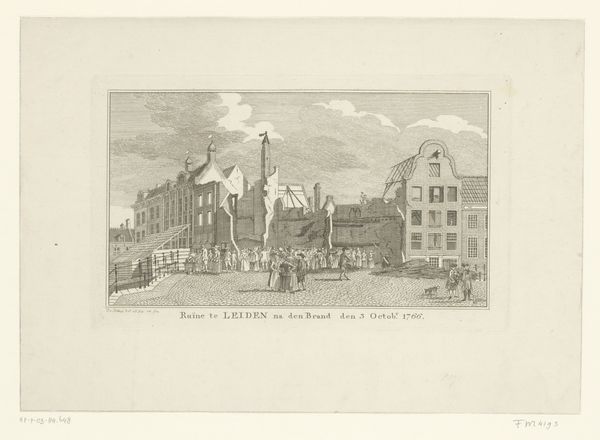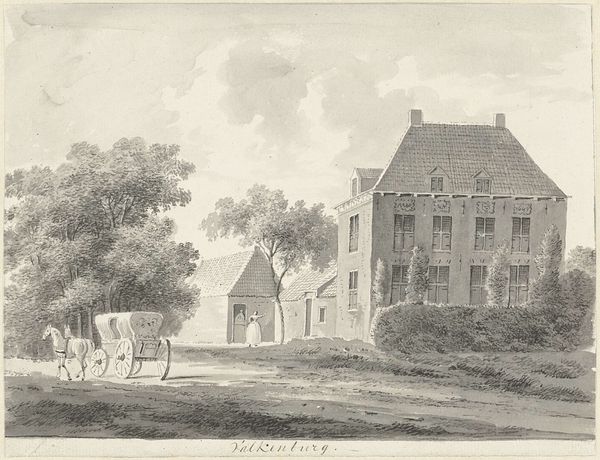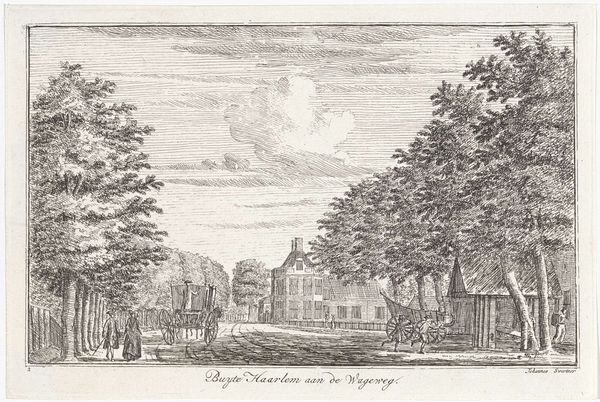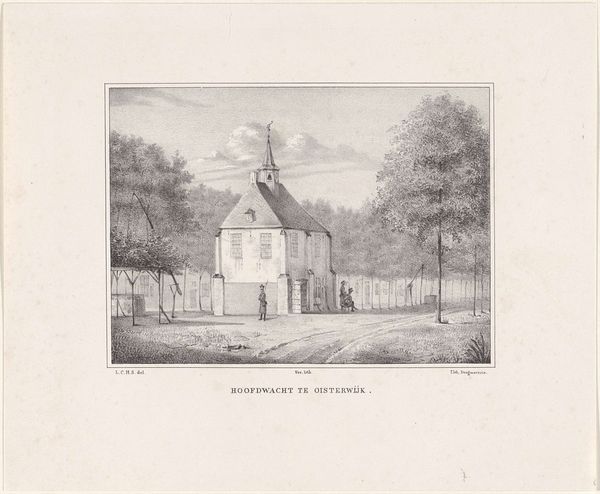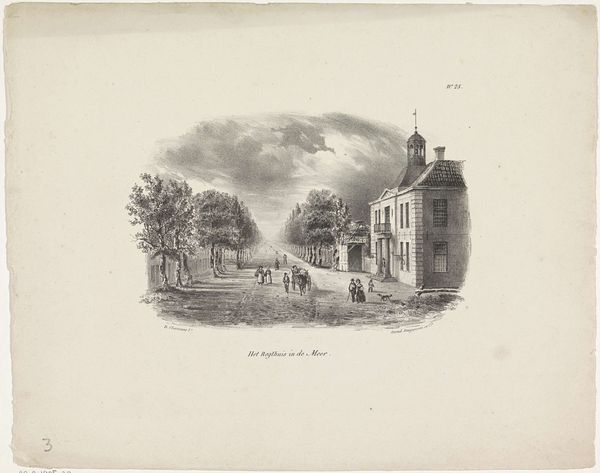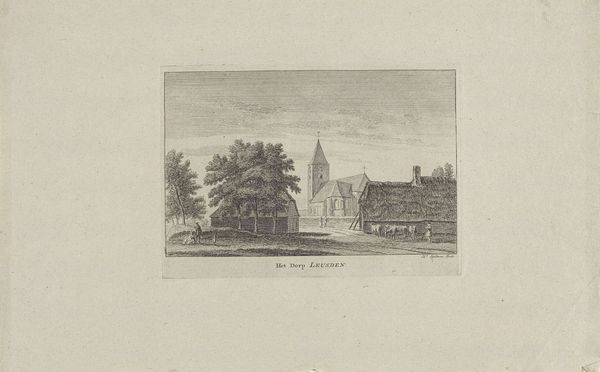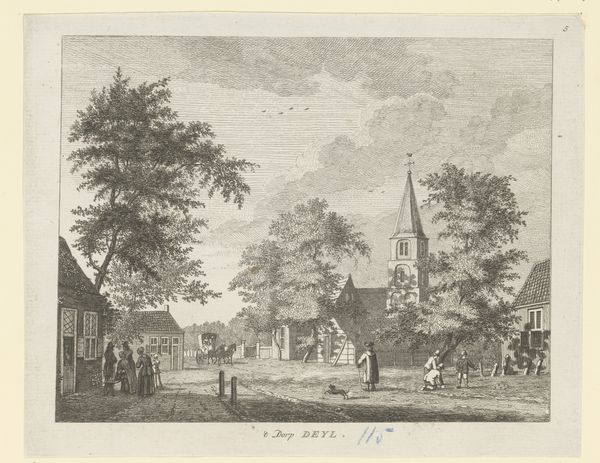
drawing, print
#
drawing
#
neoclacissism
# print
#
cityscape
#
realism
Dimensions: height 283 mm, width 357 mm
Copyright: Rijks Museum: Open Domain
Editor: This print, "Hoofdwacht te Oirschot, 1830-1831," by Marinus Adrianus van Straten, really captures a sense of daily life. I’m drawn to the architectural detail and the uniformed figures. What stands out to you in terms of symbolic imagery here? Curator: The Hoofdwacht, or main guardhouse, isn't merely a building; it’s a focal point of power and order within the community. The presence of soldiers, their postures and groupings, speaks to the sociopolitical climate. Look at the flag; what do you read from its presentation? Editor: It's lowered... is that a sign of mourning, or perhaps just a typical day's end? Curator: It introduces a layer of complexity. Is it defeat, respect, transition, or a mere bureaucratic act? Consider the symbolism of gates, arches, wells; these structures often represent passages, access to knowledge, or provision. They ground us. Does that symbolism affect how you view the composition? Editor: That makes me wonder about the artist's intent. He is choosing specific architectural elements and citizens, creating a narrative that suggests a power structure but not one that feels overtly menacing. Curator: Precisely! And consider that the symbolism embedded within a piece can change over time, influenced by the viewer's own experiences and cultural context. Editor: This has given me so much to consider about how architectural art can speak volumes about cultural memory. Curator: Indeed. The image becomes a living text, shaped and reshaped by those who encounter it.
Comments
No comments
Be the first to comment and join the conversation on the ultimate creative platform.
